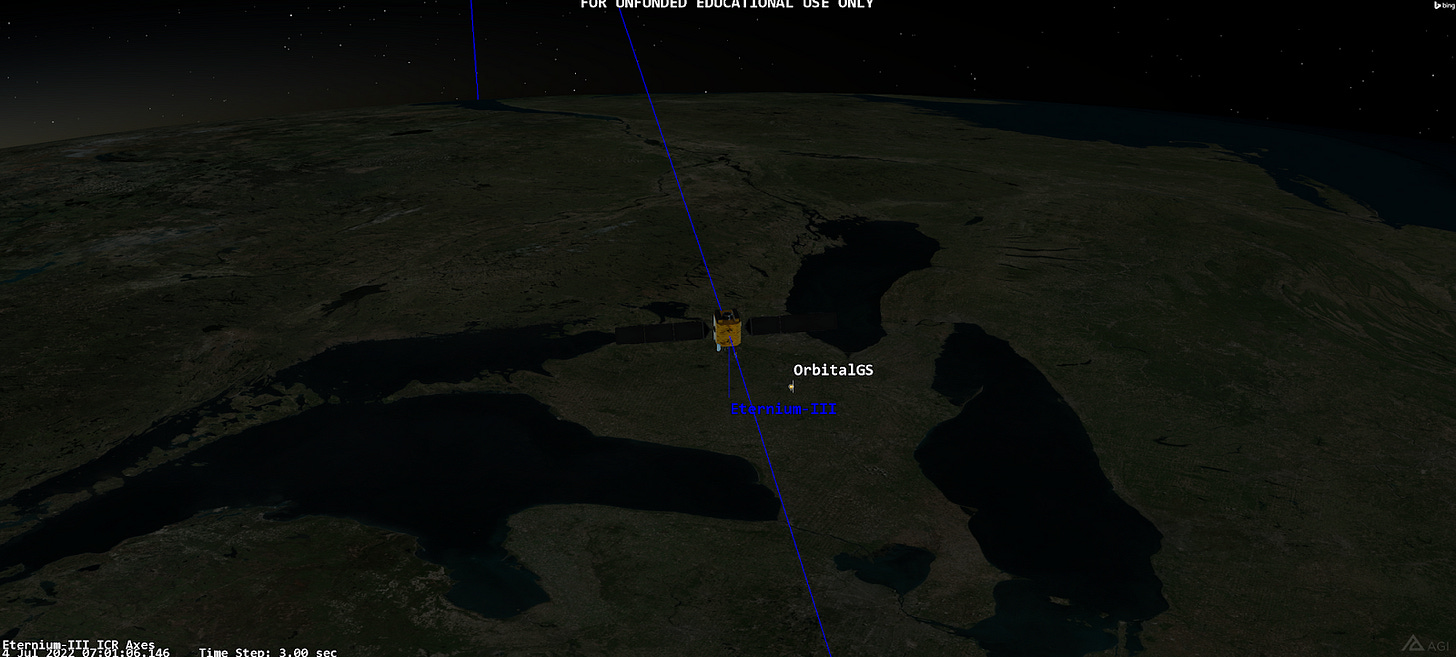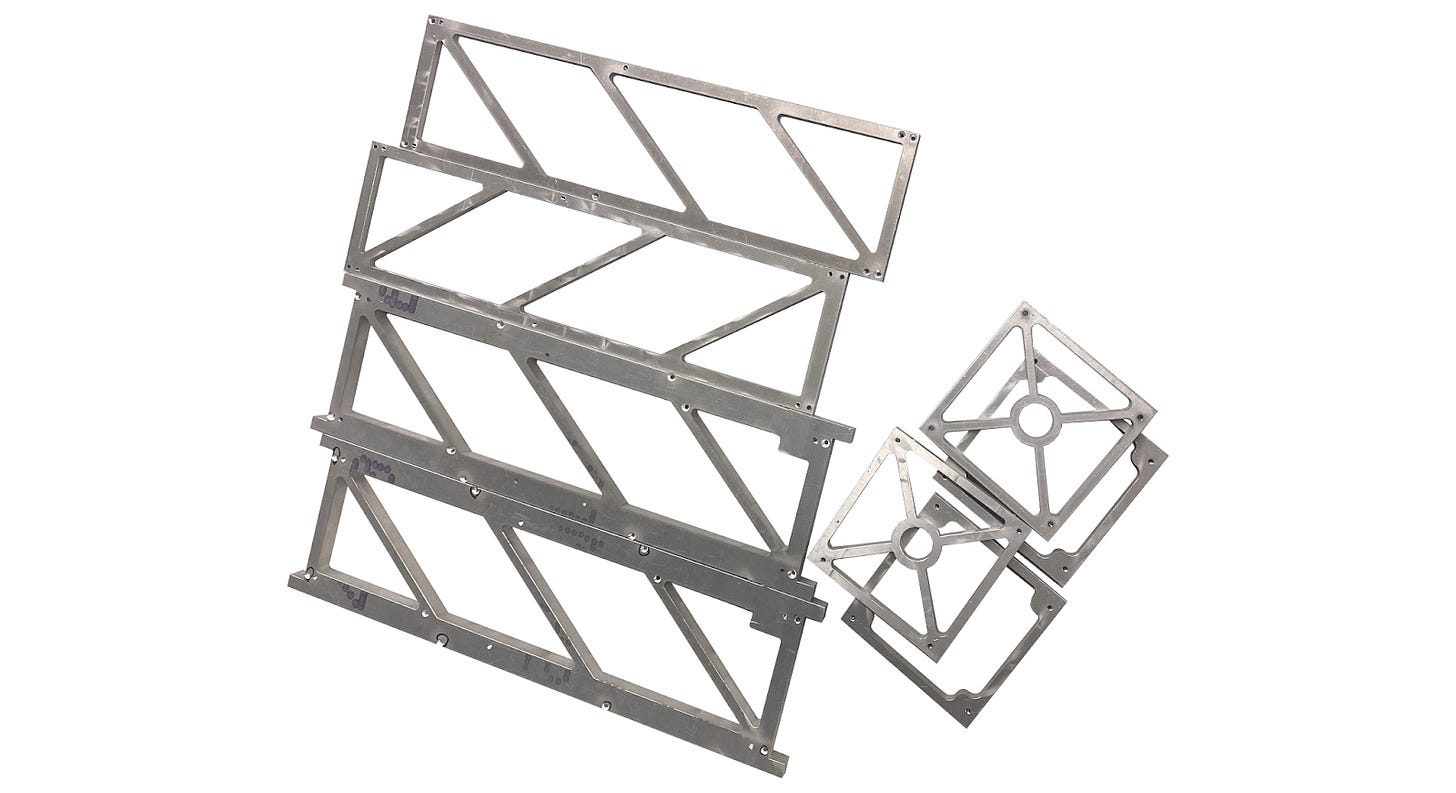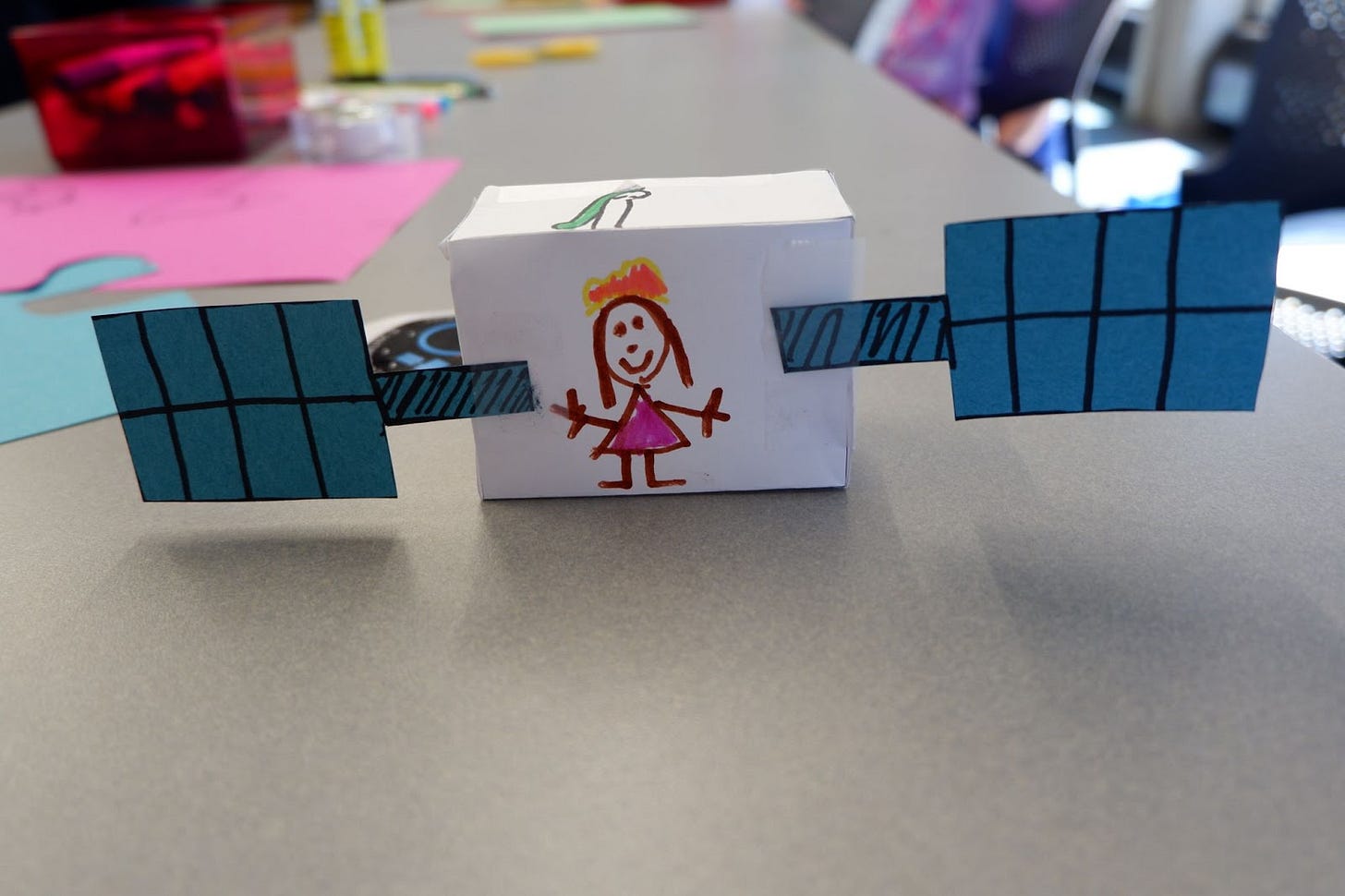Chapter Two: Chasing the Moonlight
6 min read
Another month has passed by without notice and we are now nearing the end of summer with some exciting updates from the UW Orbital team!
Before we get into it, here’s a quick recap of what our teams were working on previously:
Electrical Power Systems (EPS): finalized the solar panels, power distribution system, load switch circuitry, Maximum Power Point Tracking (MPPT) architecture plus its board and algorithm.
Command & Data Handling (CDH): finished the software organization and architecture, completed first revision of the onboard computer (OBC) design, and concluded the testing of the software development toolchain.
Communications: developed a functional evaluation board, an RF frontend board, and a custom firmware driver, and also successfully transmitted a message from the transceiver and ground station prototypes.
Attitude Determination and Control System (ADCS): designed an in-house magnetorquer and its assembly equipment, created a Simulink program, and programmed an algorithm to control satellite attitude.
Mechanical: designed two CubeSat models and 3D printed one of them, designed a mechanism that interfaces with deployment switches, and performed structural and first thermal simulations.
Payload: chose a secondary payload mission, and selected and ordered a camera for the secondary payload as well.
Business: received immense support from the University of Waterloo and several organizations, hosted a fireside chat with Martha Lenio and Sohrab Haghighat, coordinated our first resume critique online, secured sponsorships, delivered the first round of team merch to members and sponsors, created the UW Orbital website, and lastly increased our online presence and reach tremendously.
Now let’s get into the fun part – here’s what the team has accomplished in the past month!
EPS
Following the progress on the MPPT system, the EPS subteam has finished updating the firmware and also performed functional hardware tests on the board. They have also finished the solar panel board layout which includes solar cells, a transimpedance amplifier circuit for our sun sensors, and a temperature sensor. They defined the firmware architecture of the electrical power system alongside the startup sequence and the lifecycle of the satellite’s power system in space.
Upcoming plans of the team includes sending the solar panel for fabrication after a series of internal board reviews, finishing CAN development board and proceed with its fabrication too, begin testing of the MPPT firmware on the boards to fully define the MPPT system for our satellite, and lastly start writing the firmware for other aspects of EPS such as startup, validation, code for the CAN transceiver and the BMS controller.
CDH
After the completion of the first OBC revision, the CDH subteam finished the printed circuit board (PCB) layout for it. To help the team’s developers test their code without a development board, they also integrated the Linux FreeRTOS port into our repository. The team showed great progress in implementing the core pieces of our software architecture, namely the parameter manager that handles concurrent access to system parameters, and on the side began the integration with other subsystems.
The team’s next steps are to finish routing the PCB for the OBC Revision-1 and to continue implementing device drivers to interact with onboard peripherals, such as the real-time clock. They also plan to refine the integration with the other subsystems, which includes defining Telemetry and Command structure with the communications team, and similarly defining and specifying the interface between the EPS microcontroller and the OBC microcontroller.
Communications
Although previously finished, the comms subteam decided to redevelop the RF frontend board for better amplification and filtering of signals transmitted and received onboard the spacecraft. Along with that, they completed the refined architectures for the ground station and onboard hardware and software. Lastly, the team developed an orbital mechanics simulation to verify link budget and prove that the satellite can downlink data to amateur radio operators (AROs) as well as the Mission Control Centre (MCC).
From here onwards, the communications team plans to refine these simulations as well as test the RF frontend board with a spectrum analyzer and frequency generator to measure properties such as bandwidth and output power. Similarly, they will be working on developing the Multi-use Variable-gravity Platform (MVP) ground station software, including a GNURadio program that can decode modulated radio waves from our onboard transceiver prototype.

ADCS
Moving on to ADCS, who had previously completed the design of the magnetorquer assembly equipment have now finalized its assembly process. The subteam has begun implementing ADCS firmware into the satellite-wide code and testing its functionality. Simultaneously, Orbital has partnered with VectorNav who sponsored our VN-100 which is a high performance inertial measurement unit (IMU).
Later the team will begin verification and validation testing using MATLAB x Simulink simulations of hardware, algorithms, operations, and more.
Mechanical
The Mechanical subteam machined our first iteration chassis via waterjet and computer numerical control (CNC) and concluded the development of the Deployment Switch system. They have spent countless hours learning through machining and the testing process on how to construct it better.
After this the team is heading towards finishing the chassis machining as well as preparing for the vibration testing in August!
Payload
As the rest of the teams continued to progress, payload had settled on their laser parameters for our secondary payload’s ground beacon. They have also finalized the architecture of the secondary payload software and started the prototype work with the camera software
Soon after all that is handled, the team will be finalizing the secondary payload optics as well as capturing a photo from the primary payload camera.
Business
On the backend of Orbital are our business team members working hard to support everyone involved in this project. In the past month, the business subteam reached out to 20 local companies across a variety of industries in hopes of obtaining monetary sponsorship, coordinated an educational outreach event with the Waterloo Public Library where children had the opportunity to learn and construct their own little CubeSats, we have also received support from the University of Waterloo’s Science Society (SciSoc) as well as funding for electrostatic-sensitive device (ESD) equipment from the university’s Engineering Society (EngSoc). Alongside that, the team has finished most of the planning for our next Kickstarter campaign’s launch in September and completed the report for the Rising Youth Grant, officially becoming an alumni!
We also hosted our second resume critique to guide students with specialized feedback based on their field of study and individual competencies. The team coordinated the planning of the ActinSpace Hackathon with our partner, SEDS, as project managers in order to inspire other university students about space tech startup ideation and spark interest and awareness in our university community about space careers. Additionally, the team secured a partnership with Wix and will be organizing a Wix workshop next term where we will be distributing 25 free premium plans! On the side, we followed through two marketing campaigns: the member spotlights and sponsorship shoutouts.
Next on our list is to start reaching out to University of Waterloo professors for potential secondary payload opportunities. We are aiming to receive around $10,000 in funding from the Uwaterloo Math and Engineering Endowment funds combined. We are already half way through our next Kickstarter’s planning, currently focusing on finalizing the donors’ rewards as well as preparing for the campaign’s promotional material.
Similarly, we are planning a fireside chat with Logan Jones who is a Top 32 Candidate for Canadian Astronauts’ 2017 recruitment in order to inspire students about the space industry. Our aim is to have a minimum of 25 attendees. We are also finalizing quotes and submitting orders for merch and banners to Imprint Anything, one of our supporters, plus organizing payments, final quantities of merch, and its delivery to the members. We are also planning to ramp up next term’s recruitment season preparations for our demos at the Student Design Team Showcase as well as our recruitment events next term.
As a whole, the business team also hopes to become more uniform and organized in our workings and interactions between all the business units (Outreach, Finance, Event & Merch, and Marketing)
Want to know how our project turns out in the end? Stay tuned for our updates in Chapter Three next month.
This was News from the Orbit – now signing off!
Connect with us on LinkedIn and Instagram and check out our UW Orbital site.
Interested in keeping up with UW Orbital? Subscribe below if you haven’t already!






